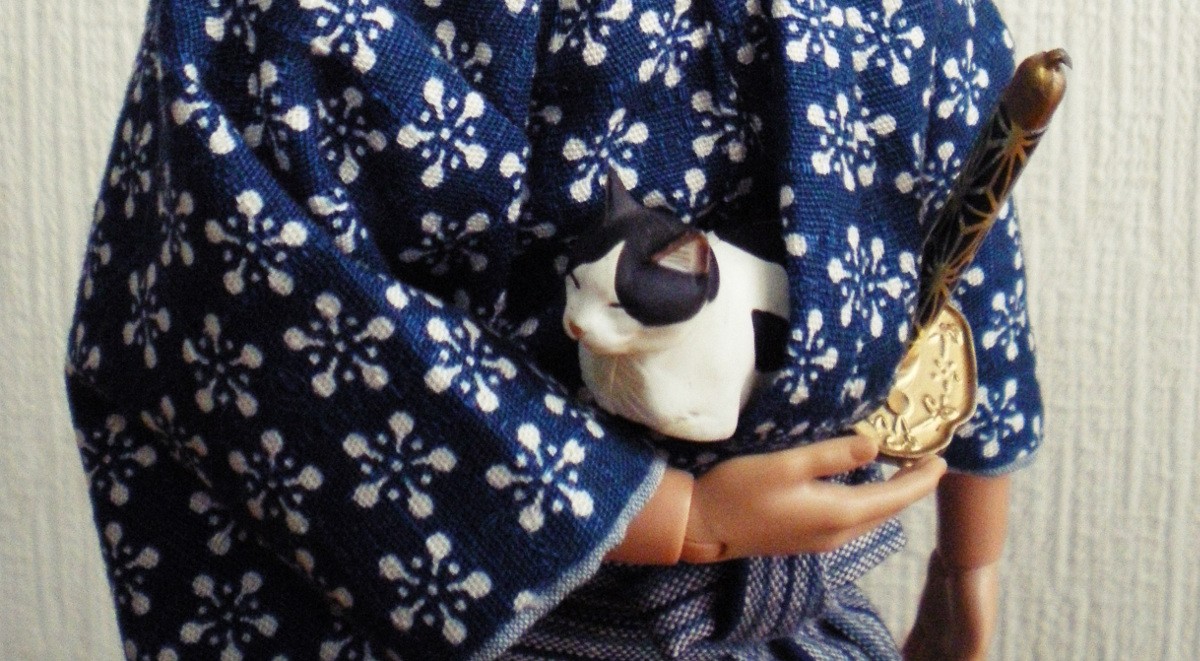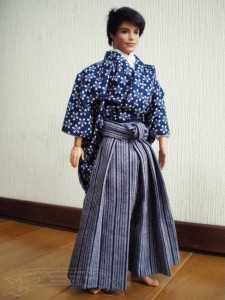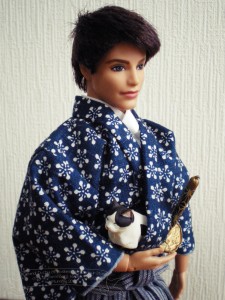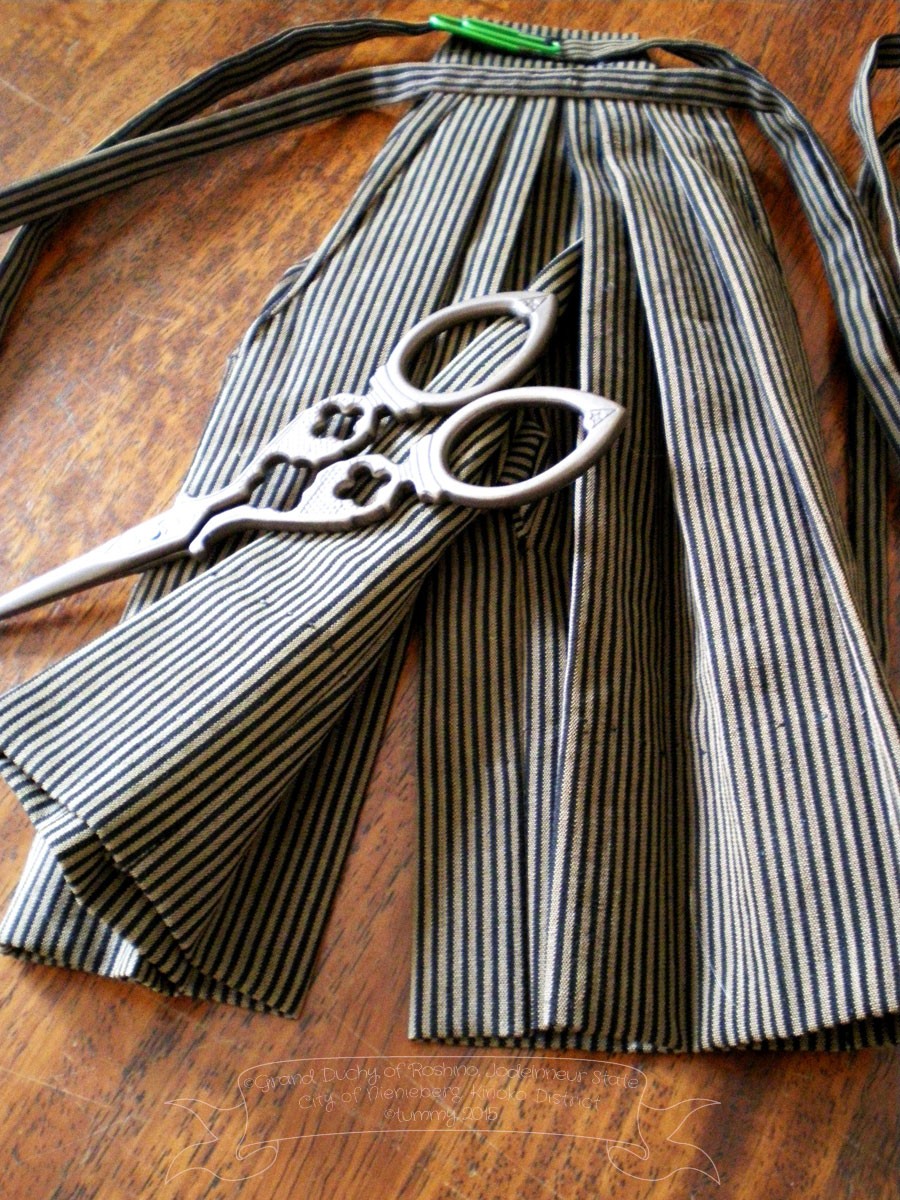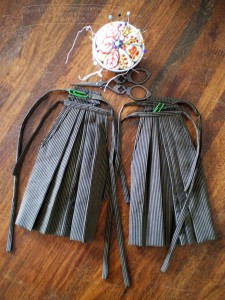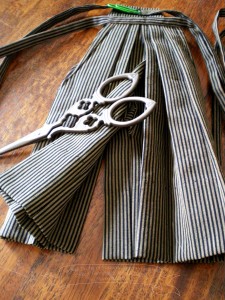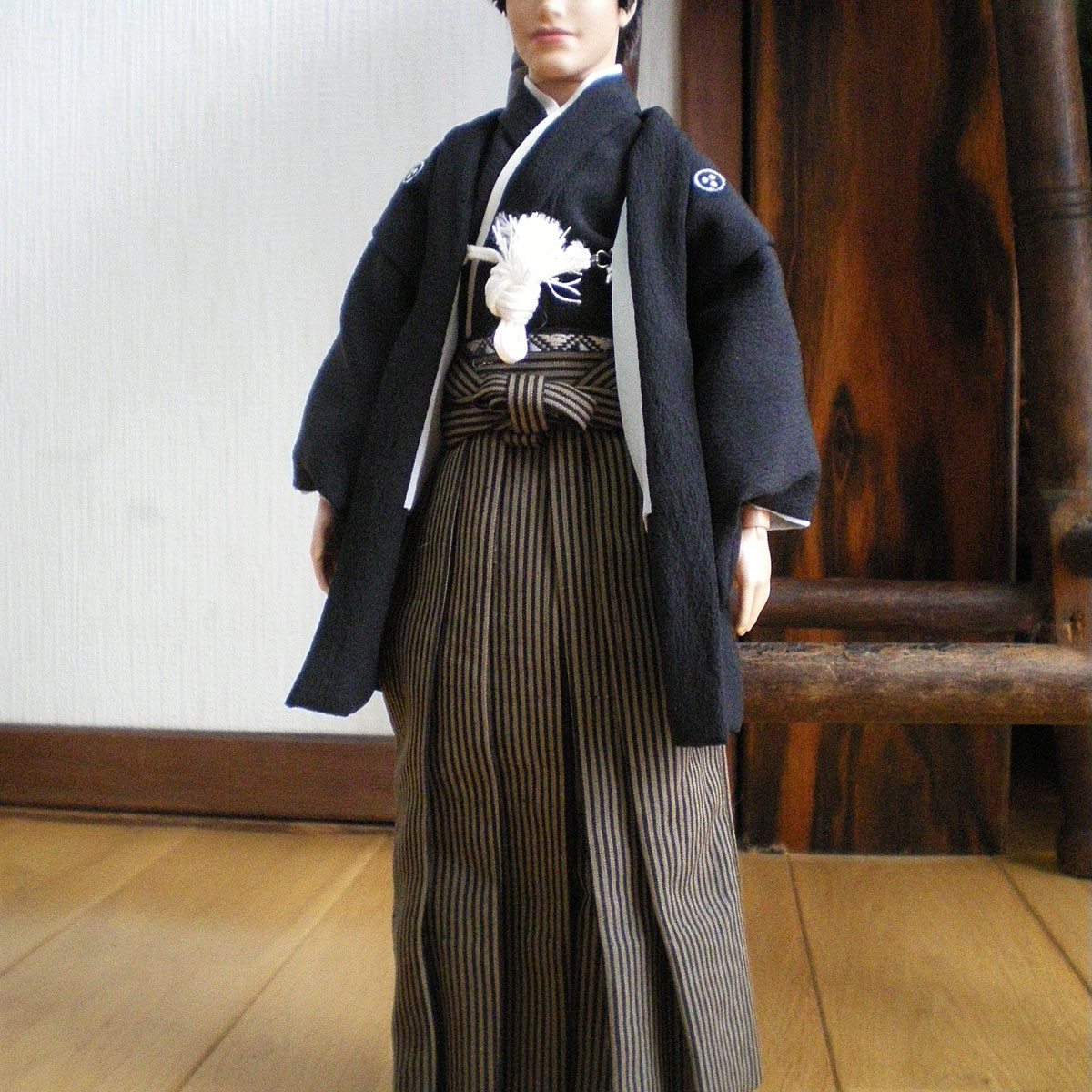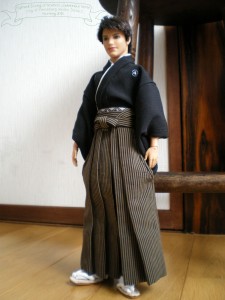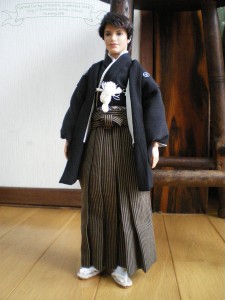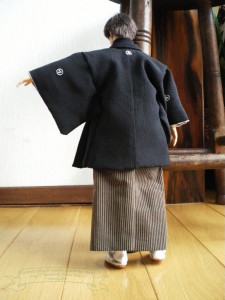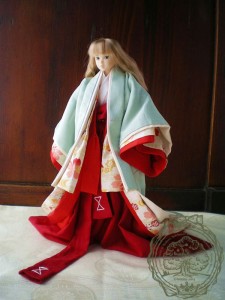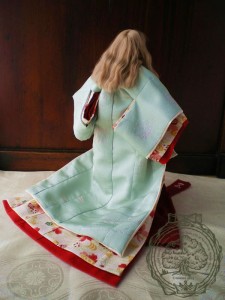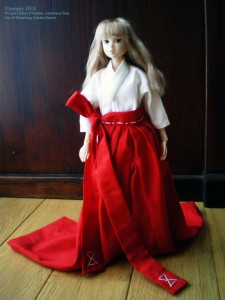Grand Duchy of Roshino, Jodelnneur State, City of Nienieberg, Kinoko District
ロシーノ大公国ヨーデルヌール州ニーニーベルグ市きのこ地区
Hakama for 1/6 size dolls 1/6サイズドール用の馬乗り袴
お人形用の袴です。
Hakama for dolls.
足を入れる部分が二つに分かれている馬乗り袴があります。
There is two types of men’s hakama: one is called “Andon hakama”
which is a skirt-type (undivided), and the other
called “Umanori hakama” which is for horse-riding (divided legs).
襞の畳み方が左右対称ではないところが特徴です。
Umanori hakama is more masculine, so to speak.
It has a distinctive arrangement of pleats, that is asymmetrical.
Doll’s Kimono Montsuki Hakama 1/6サイズドール 紋付袴
着物と羽織の両胸と背中、両袖の後ろに紋が入ります。
これを「五つ紋」といいます。
長着に袴をつけます。
I made a kimono and hakama ensemble with family crests for 1/6 size doll.
It’s Japanese man’s formal attire.
Its kimono and haori have family crests on both sides of chest, back, and back of the sleeves.
They are called “Itsutsumon”, meaning five family crests.
First, put nagagi (ankle-length kimono) and hakama.
Then wear a haori over.
You can see where those family crests are on the back.
Doll’s kimono ~the Heian period 1~ 平安装束 -筒袖&長袴-
白い筒袖の着物に長い緋袴をはきます。
緋袴の紐の端に縫われている模様は、「立鼓」(りゅうこ)と言います。
I am now working for doll’s costume of the female nobles from Heian period.
The top is a white kimono with tight sleeves and
the bottom is a red long hakama.
The hourglass-shaped decorative stitching at the end of the belt of
red hakama is called, “Ryuko” (standing drum).
